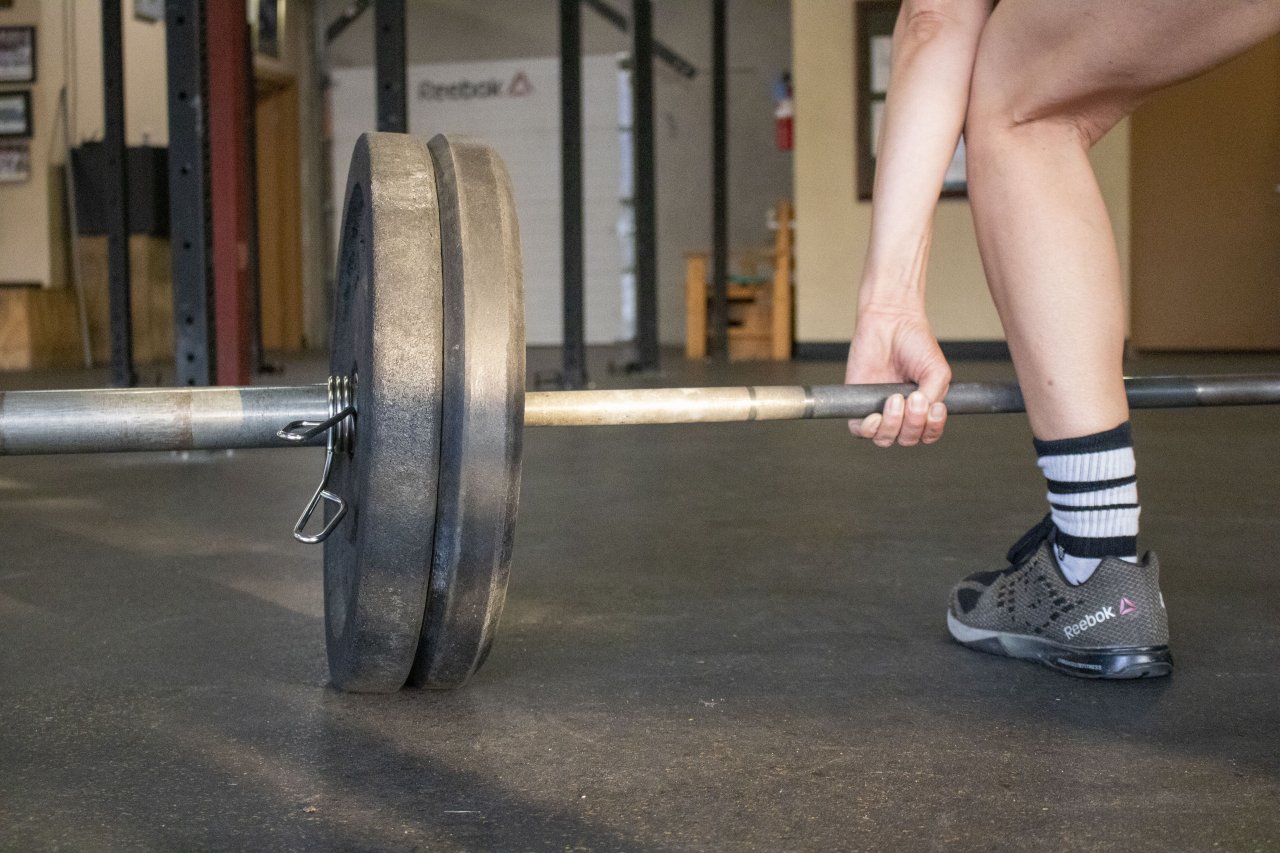“USE THE HOOK GRIP!”
You’ve heard us say it over and over and over again.
Look, Optimists — I get it. Many moons ago, I was like you: skeptical about my coaches demanding that I use a hook grip any time I pick up a bar off the floor.
At first, it can be a bit uncomfortable. But if you stick to it, over just a bit of time, it will become second nature. And trust me, it will increase the loads you can move.
What is the hook grip?
Before we get much further, let’s do a quick review about what, exactly, the hook grip is.
When you approach the barbell, get the knots of your shoelaces beneath the bar, and go to grip the bar, you simply wrap your index and middle fingers, at a minimum, over your thumbs. (As you’re reading this, do you find yourself making one of those fists that you should never throw a punch with? You know, a fist with your thumb inside? Well, it’s not good for throwing punches, but it’s excellent for lifting barbells!) If you can get your ring finger and even the pinkie over the thumb, all the better.
Why the hook grip is important
So, why is that grip that your coaches are always harping about so important? It’s all about having a solid, firm grip on the bar when you’re pulling it from the ground. Have you ever pulled for a clean or a snatch only to have the bar fly out of your hands mid-lift? Dollars to donuts, it was a moderate to heavy load and you weren’t using the hook grip. Think of it as added protection — safety against blowing out a grip.
We like to tape our thumbs or use nubbies for a bit more thumb protection and added grip. Give it a try — you’ll love it!
When to use it
When should you use it? Always, always, always employ the hook grip when you’re doing the Olympic lifts — the snatch and the clean-and-jerk.
You should maintain the hook grip when pulling from below the waist until the bar passes the waist. Some athletes feel comfortable maintaining the hook grip fully through the snatch, finishing with the bar overhead and the hook grip intact. Others like to let it go as the bar transitions from the waist area to overhead. On the clean-and jerk, athletes often loosen their grip as the bar travels the final distance from the hip to the front-rack position, catching the bar with open hands. But if you feel more comfortable releasing the grip after you’ve caught the bar, that’s fine too.
When not to use it
When don’t you use the hook grip? On power movements and on lifts that start at the front rack or back rack. There’s no need to start a strict, push or bench press, or any squat movement with the hook grip.
When it comes to the deadlift, we don’t demand that you use this grip. It’s best when you’re working light or moderate loads with several repetitions to use a clean grip on deadlifts (including the hook), but as the load increases, you’ll likely find yourself switching to a mixed grip, where one hand remains in the clean position and the other is backwards. With those heavy loads using a mixed grip, it’s wise to mix up which hand faces forward so that you can balance your strength training and not have lopsided strength.
Now that you know a bit more about how to use the grips, make sure you put the knowledge to work next time you pick up an Optimistic barbell!
See you at the box!
